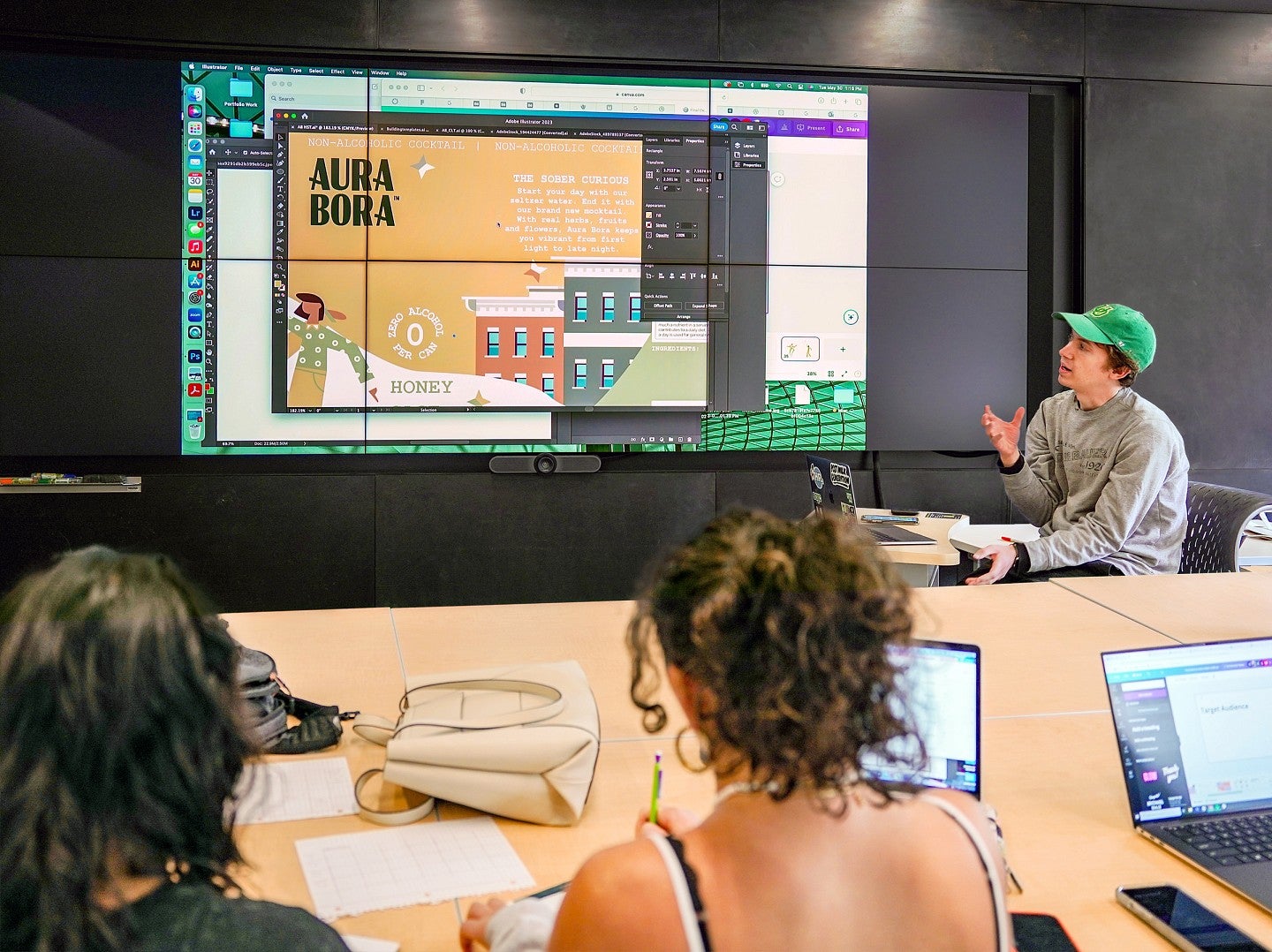
Question everything. That’s the philosophy that guides the UO School of Journalism and Communication’s (SOJC) advertising program.
The program’s goal is to prepare students to think broadly about both the effectiveness and the impacts of advertising. It’s also a key driver behind the school’s focus on brand responsibility, also called brand purpose and corporate social responsibility.
“Advertising as a social system is so pervasive and so powerful that we would be remiss having an educational program that didn’t dedicate itself to asking questions,” said Deb Morrison, SOJC associate dean of undergraduate affairs and a teacher in the school’s advertising programs. “Our responsibility [at the SOJC] is to question ourselves and teach students to help brands question what their advertising does to the world, in society, individuals and how people think.”
Brand responsibility: More than just corporate social responsibility
Brand responsibility has been a pillar in the SOJC’s undergraduate advertising program for many years. The term refers to a company’s acknowledgment that it has a duty to do more than just make money. It needs to also make a positive difference in the world.
Looking to put even more focus on brand responsibility in the school’s curriculum, Morrison partnered with professor emerit Kim Sheehan to launch the first-of-its-kind Master’s in Advertising and Brand Responsibility (MABR) in 2018.
The program harnesses the passion of students who want their work in advertising to benefit people and the planet in a global movement of cultural and economic responsibility.
“Their ability to ask important questions and make beautiful and relevant work is their superpower — be it for any of the career choices they make, but also for their own sense of relevance in the world,” Morrison said.

It's difficult for brands and advertising professionals to articulate the importance of brand responsibility because so far there is a lack of data proving its direct impact on profit, according to Doug Zanger, founder and president of ThinkNW, a professional organization for advertising and marketing professionals in the Pacific Northwest. Nevertheless, there is a growing understanding of the opportunities and possibilities of purposeful branding and creativity. This is becoming evident with brands that embrace the idea at varying speeds, including Patagonia, Nike, Ben & Jerry’s, IKEA and Starbucks.
Jacobi Mehringer ’16, advertising alum, founder of visual technique library Eyecandy and creative director at the global advertising agency Wieden + Kennedy — which was founded by SOJC alum Dan Wieden '67 — says brands need to be prepared to back up their values because consumers are becoming more vigilant about brands that are greenwashing, rainbow-washing, gender-washing and woke-washing. Those are all terms used to describe when a brand makes a commitment to socially responsible topics in declaration only.
“If you are going to make a stand, don’t make it an empty promise — because if you back down at first sight of blood, it hurts more than if you had stayed out to begin with,” Mehringer said.
This type of inauthentic brand responsibility is what interests Sally Lim, assistant professor of cultural diversity and brand responsibility. Her research has focused on communication between brands and consumers on social media that revealed a spike in criticism of what companies are doing under the name of brand responsibility. For instance, many companies have overused rainbow flag imagery during Pride Month without efforts to deeply understand sexual and gender minorities and to support the communities. It has led consumers to distrust Pride campaigns and criticize rainbow washing, perceiving these campaigns as inauthentic.
“We have a responsibility in advertising, as well as in society, because our messages can influence people and change our society,” Lim said.
She stresses the importance of teaching students to not only learn about sociopolitical issues that brands can take a public stance on and help solve, but to also navigate consumer reactions and backlash against advertising campaigns as part of brand activism. Nike’s Colin Kaepernick advertisement, which ultimately led to an increase in stock, sales and brand image for the company, is an example of this.
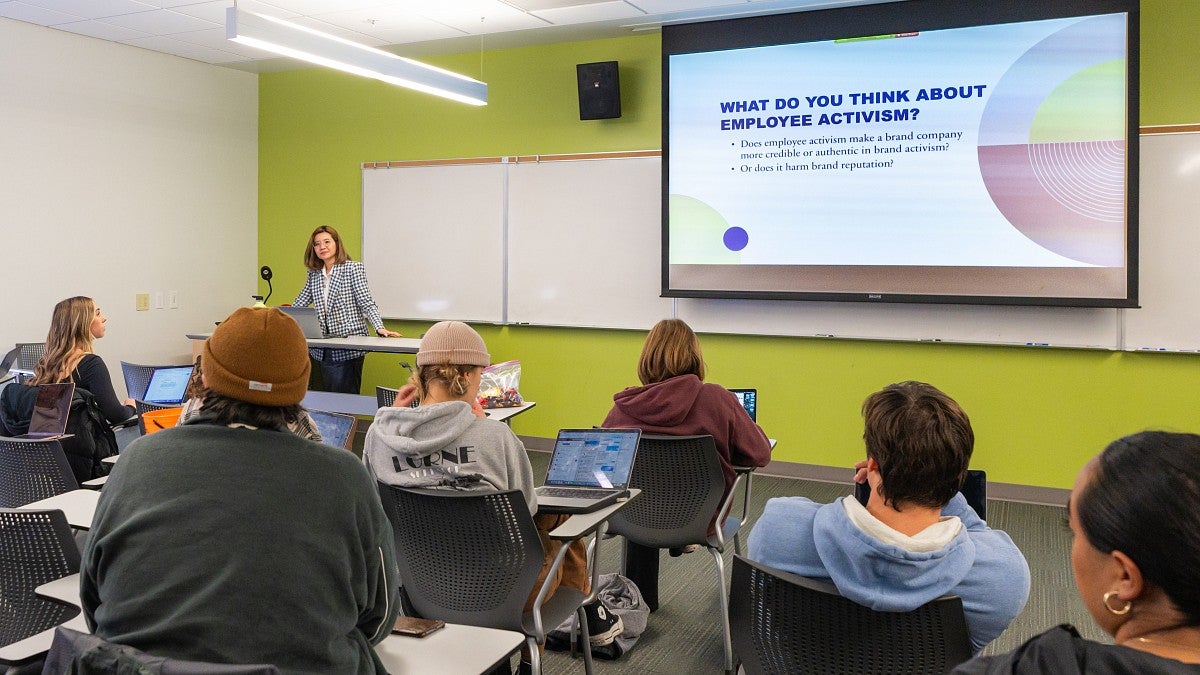
Flooding the field with leaders in brand responsibility
When SOJC alum Travis Kim, BA ’18, MA ’19, was surprised by an early graduation, the Master’s in Advertising and Brand Responsibility program was a perfect way to continue his college experience and expand his strategic skills to become an expert on social responsibility in advertising.
In the master’s program, Kim found that the courses intertwined advertising with concepts such as impact, ethics, diversity, equity and inclusion.
“It was at first challenging, but ultimately really rewarding to get the vocabulary to talk about really complex societal issues,” Kim said. “I think that’s a challenge for everyone and anyone, but it’s so rare to be in a space where those conversations are happening often. Like design and diversity — you don’t get to talk about that intersection a lot. I think it was really an area for me personally, outside of what I do for work, to think about deeply.”
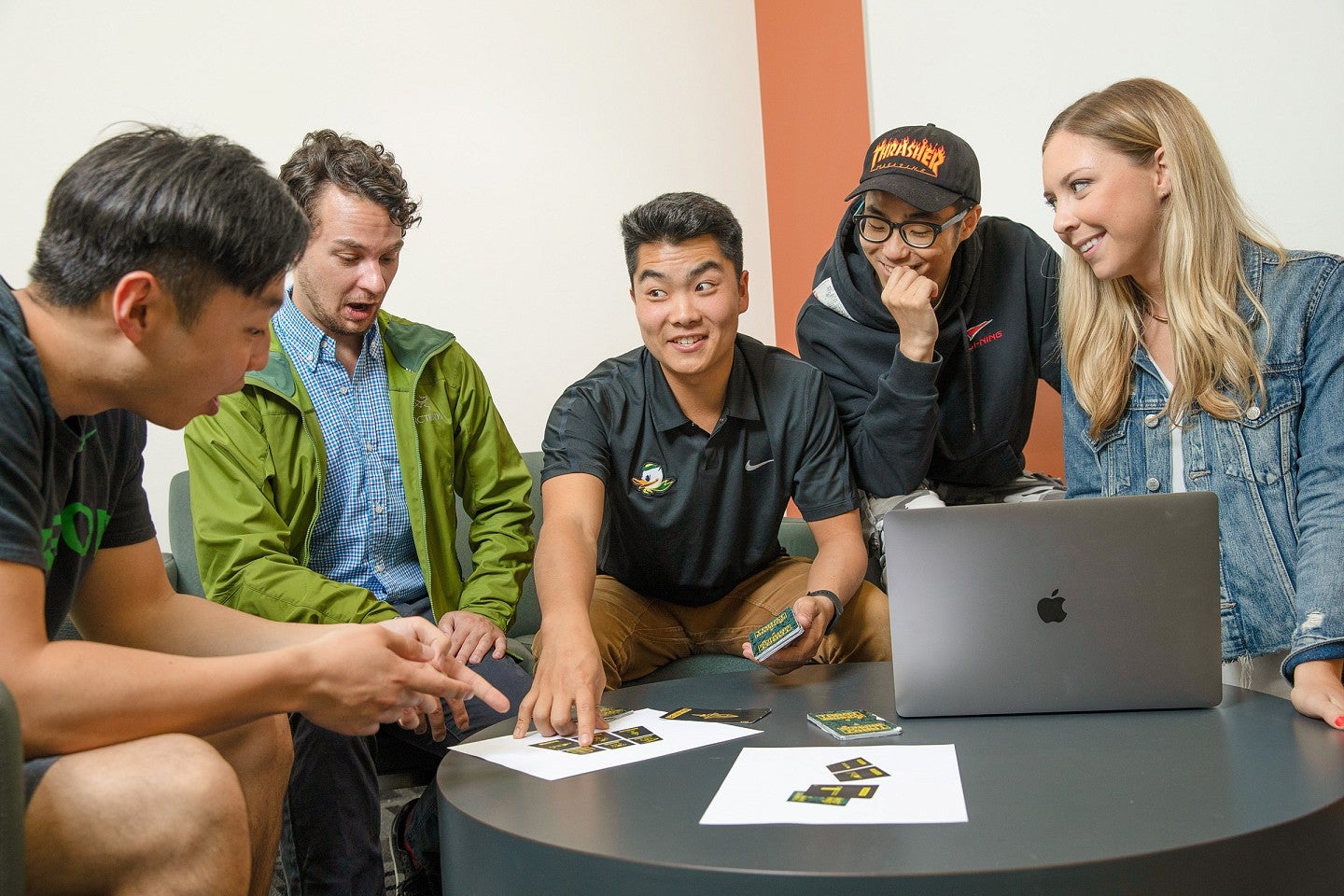
Justin Johnson ’23, also an alum of the MABR program, was an active member of Allen Hall Public Relations, a nationally affiliated student-run public relations firm, and active in Oregon Accelerator, a student-run organization that assists student athletes with name, likeness and image branding. He said these types of conversations in the program helped him think critically about the messages that brands are sending.
“In advertising, we are game changers in how we shape culture,” Johnson said. “When you really reflect on the social responsibilities that come with advertising and brand messaging, you see that advertisers will become more cognizant of the responsibilities that are put onto them. We are gatekeepers of brand messages, and we help cultural relevance.”
In addition to his participation in SOJC student organizations, Johnson said the program was extremely beneficial for building real-life experiences through assignments such as consulting with Opinionated, an advertising agency in Portland that focuses on bringing "big idea" creative platforms and brand strategies to its clients.
“We establish connections, show off our mastery of the topic and really show people in the industry that this cohort will be laying the groundwork in the industry of what it means to be brand responsible,” Johnson said.
For Kim, these conversations about brand responsibility were so salient in the SOJC that he was surprised to learn these conversations weren’t happening elsewhere when he graduated.
“I was interacting with a lot of folks at agencies, and those conversations weren’t happening,” Kim said. “We would talk about race, and these professionals — who had been in the industry forever and were my seniors — were stumped.”
Kim now has a freelance career focused on narrative consulting, strategy and deeper brand work for companies. He said the professional development aspect of the SOJC and professors who came from the industry have been instrumental in his career path. Kim also pursued several opportunities for hands-on learning, including working for Allen Hall Advertising, the SOJC’s student-run advertising firm.
“The SOJC does a really great job about thinking about your academic side being critical, being ready, but also understanding the industry,” Kim said. “For me, that’s been tremendously helpful with how I navigated, especially now as a freelancer, knowing how agencies are run, knowing how they get their money, how they interface with clients, how their teams are set up. Having that literacy on the industry at large allowed me to step into my first job with a lot of confidence.”
Understanding the relationship between culture and social responsibility
“Every time I teach a campaign or advertising class, I really attend to the fact that we are reflecting the world as it is and trying to be as inclusive as possible,” said Chris Chávez, professor of advertising and interim director of the MABR program.
In the early stages of his advertising career, Chávez was often the only Latino or person of color on an advertising team, a reflection of the lack of diversity and inclusivity in many agency settings. This discovery pushed him to explore the struggle agencies face to understand consumers who are ethnically or linguistically different from them.

To grow students’ cultural experience, the SOJC encourages students to gain experience outside the classroom and away from campus. One way students can do this is to study abroad. Chávez leads learning trips to Spain, Chile and Argentina, where students partner with a client and discuss global culture and diversity. In many cases, the students from the SOJC are the minority group, which leads to a broader understanding of experiences that are different from their own.
Advertising student Michael Walsh ’23 participated in the SOJC’s Media in Ghana program as an intern for the Ghanian advertising firm Innova DDB.
“The role that I was in as producer, we were on set,” Walsh said. “My typical day would be capturing behind-the-scenes footage of the different things we were doing, talking to people and making sure the production was happening.”
Walsh also accompanied advertising Professor of Practice Dave Koranda and several fellow students on the advertising program’s annual trip to New York City, where students tour agencies and meet alumni. Walsh said seeing these places firsthand helped him to understand the industry.
“I think the thing that sets places apart the most is the culture itself. So figuring out not only what your role is, but what culture you feel good in,” said Walsh. “I think [SOJC’s] Allen Hall does a really good job of bringing people together and developing a culture where you’re excited to be around people who are excited to be there.”
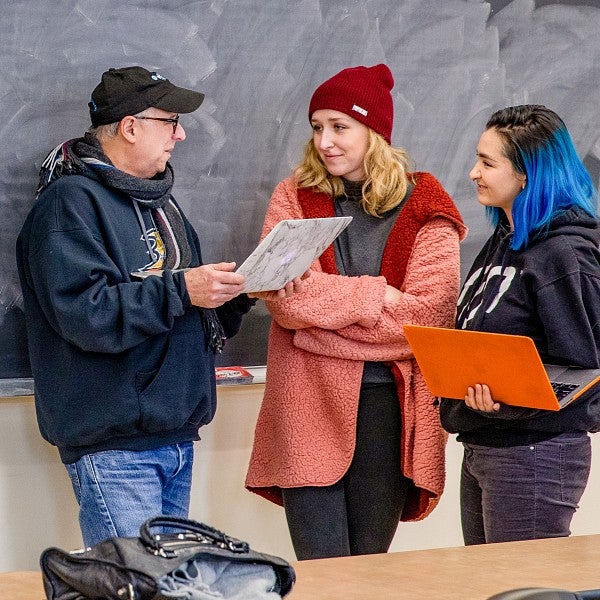
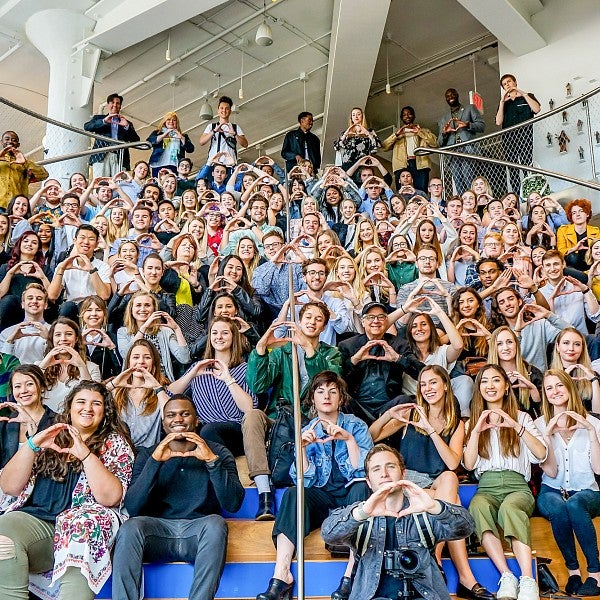
The SOJC difference for advertising students
Advertising is one of four undergraduate majors offered at the SOJC, and it has one of the highest enrollment rates of any major at the UO. According to Koranda, that’s because it’s a fun career and because advertising is the engine of our economy.
“Advertising is what actually enables things within a capitalist society to sell, even if it’s an idea, even if it’s a nonprofit,” Koranda said. “It’s advertising that helps people know about those things and tries to tell the right people at the right time so they can do something about it. So there’s never a lack of need for that.”
The SOJC advertising program aims to build students’ soft skills in courses like Ideasmithing, Curiosity and Confidence. According to Zanger, soft skills can make the difference between success or struggle in the industry.
“Taking those classes, you have to think about the why more so than just what you’re doing,” said third-year advertising student Christina Nguyen, class of ’24. “As an [aspiring] art director, I think that part of it has been really crucial to me in terms of creating work that is intentional.”
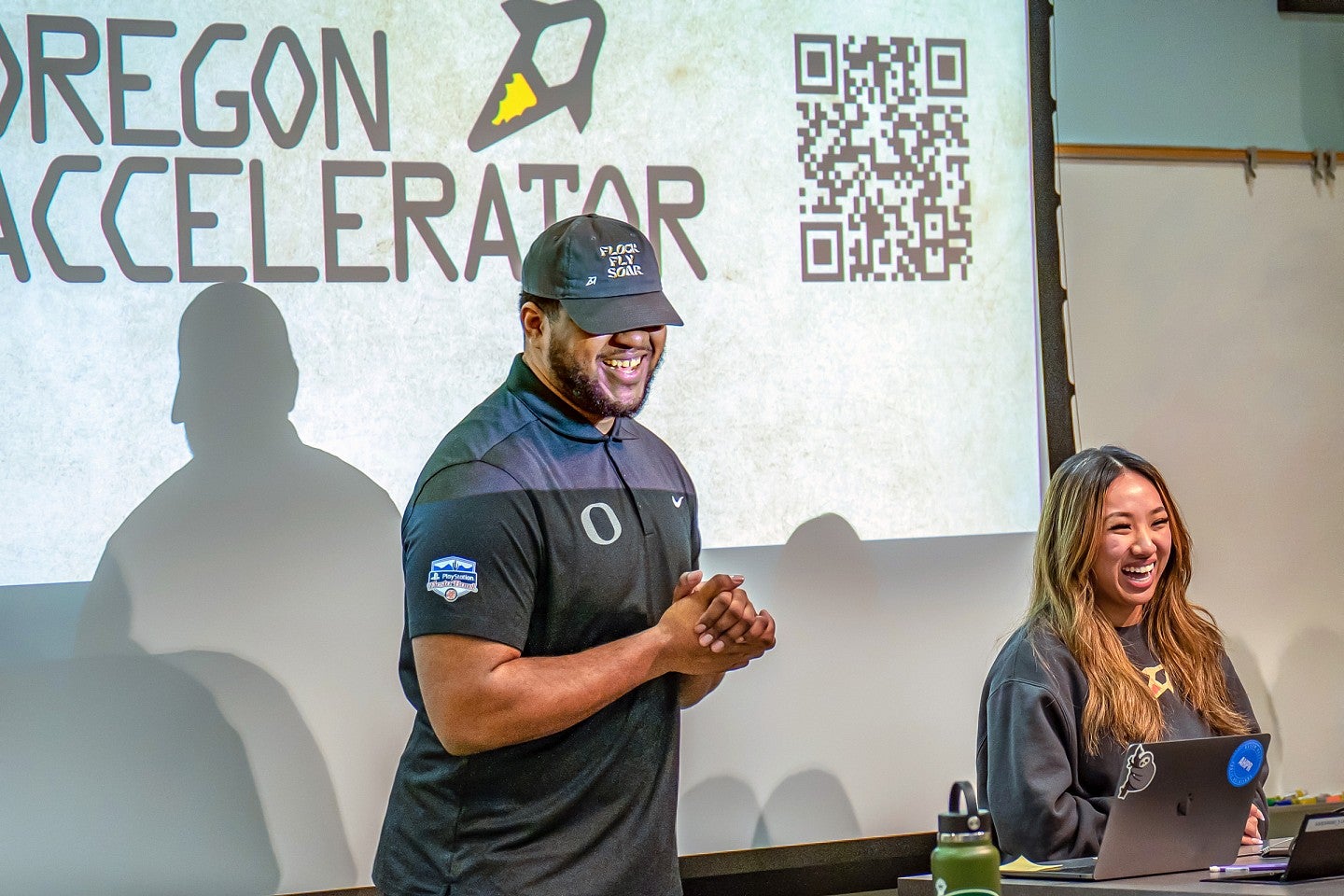
One of the SOJC’s guiding principles is providing students with a variety of real-world, hands-on experiences that help them practice what they learned in the classroom.
“I think that all of my ad classes have been very heavy on how to work with people, how to work with teams, how to pull strengths from other people to come out with work that is solid and great,” Nguyen said.
Nguyen added that a big part of her education at the SOJC comes from student organizations. She is the director of art direction at Allen Hall Advertising and the creative lead for the Oregon Accelerator.
Students also benefit from the support, encouragement and industry connections of the SOJC advertising faculty.
“When it comes to why are students pursuing advertising, I would say that there are just so many faculty members in the SOJC that drive the dream,” said advertising alum Isabella Noe ’23. “You come in here and it just seems magical and so fantastic, and you really want to get involved in the work. They facilitate that in a way that’s both realistic and kind of draws it beyond what you’re even thinking of.”
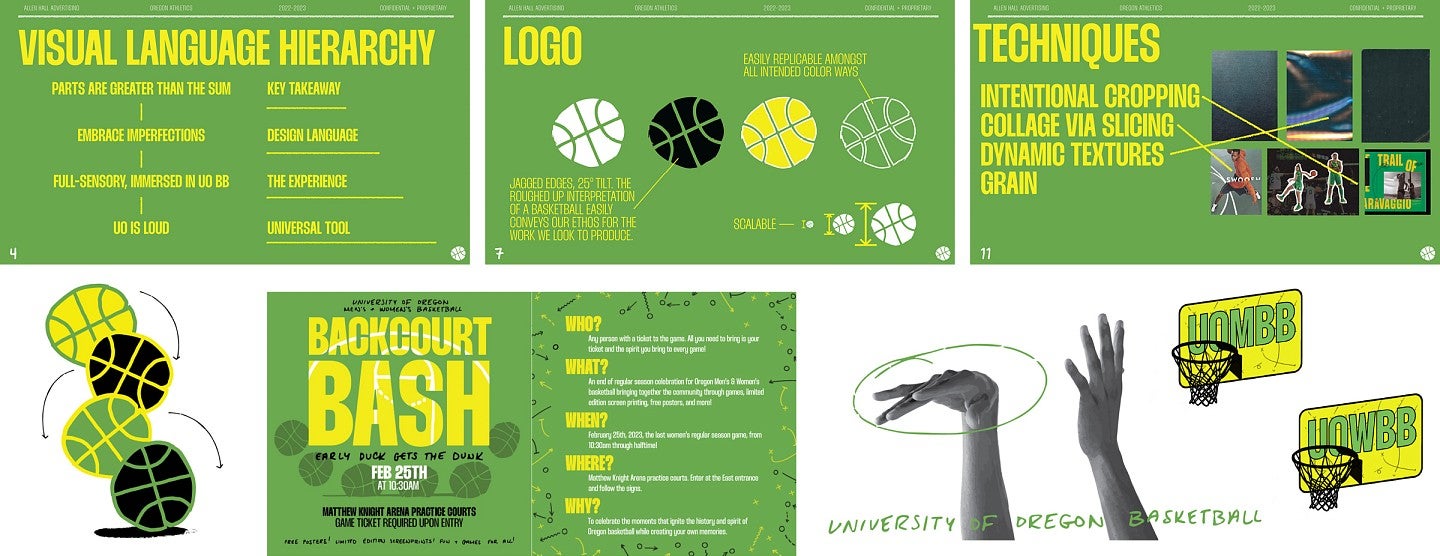
The future of advertising
A common thread among the industry professionals interviewed for this story was the SOJC’s focus on curiosity and open-mindedness. The faculty’s knowledge of the industry’s rich history, coupled with the understanding that curiosity fuels creativity, sends students into the workforce ready to use their strong voices to instill lasting change in the advertising world.
“At its best, advertising is a means to change minds and create lasting change,” said Mehringer.
The SOJC advertising program’s leaders understand the program’s limits in solving the complex problems that brand activism and social responsibility are seeking to address. Instead, the faculty and curriculum focus on teaching students to raise questions for and about brands.
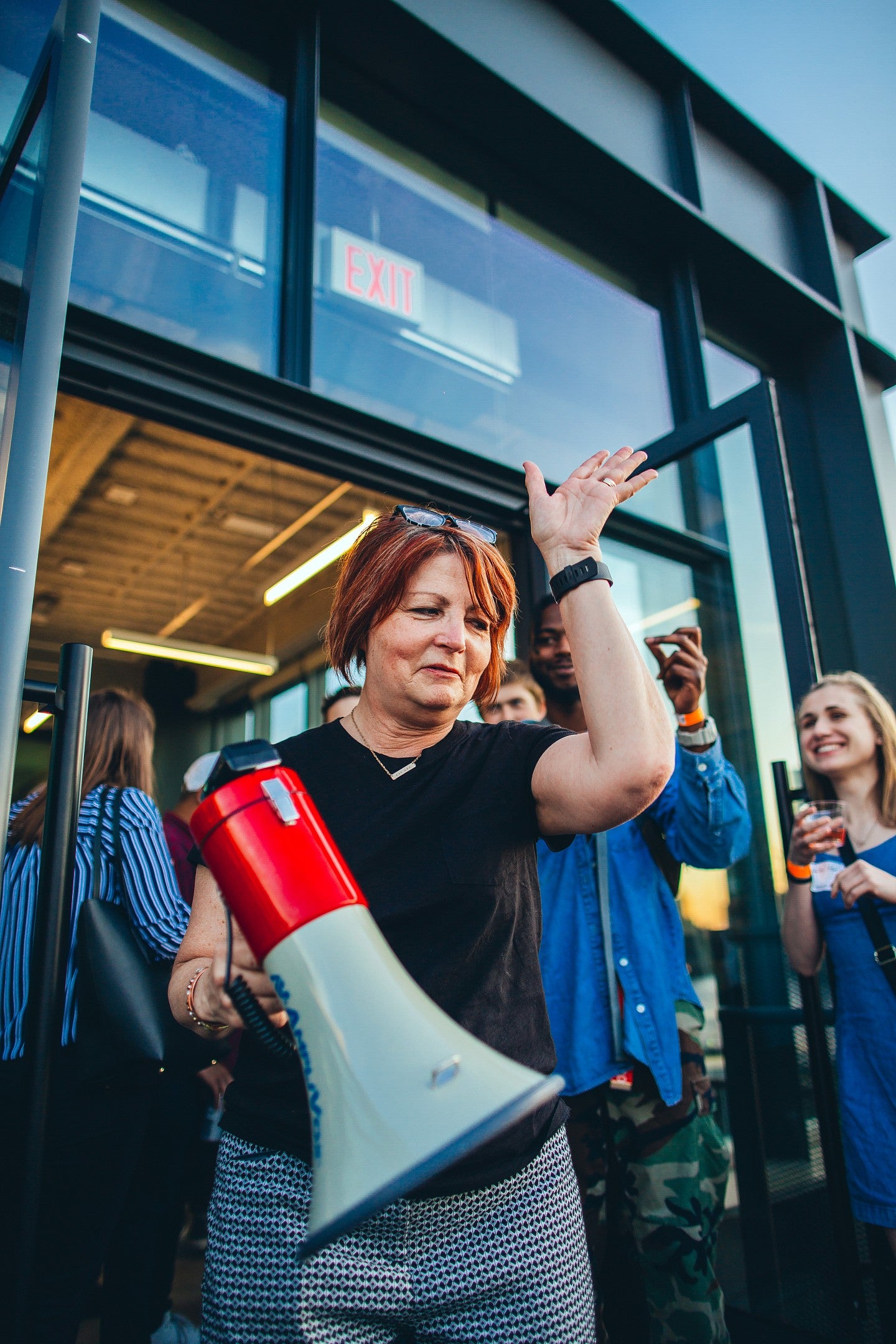
According to Morrison, the advertising industry thrives off brave, generous and curious individuals, and she wants students to graduate from the SOJC with the courage to spark open and thoughtful conversations about what it means for brands to “do well and do good.”
“We consider how creativity is bound to making work of meaning,” Morrison said. “Purposeful creativity becomes a mindset. How do I use this power to solve the significant problems facing the world?”
Morrison has taught advertising for 17 years and counting at the SOJC. Now she is also collaborating with faculty members to revamp the school’s curriculum to stay ahead of trends in advertising and teach fundamentals in courses on writing, craft and critical thinking early in the undergraduate learning pathway. Not only will advertising students build community with like-minded students and faculty at the start of their studies, but they also will begin to identify areas of mastery like strategy, project management, art direction, copywriting, design and media planning.
The perspectives of newer faculty members such as Lim and David Ewald, along with input from industry experts, are critical to these changes in curriculum and to the SOJC’s continued status as a leader in educating students entering the ever-evolving advertising industry.
The SOJC’s response to the growth of artificial intelligence is a shining example. Professionals in the advertising industry are contending with how AI will impact the future of creative professions like advertising, from brands to agencies to individuals. The SOJC faculty is treating AI as both an opportunity and a threat and is instructing students on the issue to prepare them for using it in their careers going forward. For example, advertisers can use AI to refine ad placement, scrutinize audiences, predict success, evaluate competitors, optimize budgets and craft compelling visual and written content. However, the identification of patterns by machine learning algorithms can introduce bias depending on the data available to it.
According to Zanger, the editing and creative direction that results from experimenting with AI, like editing ChatGPT articles or art-directing Midjourney images, has only increased the need for creative people.
“I think that people, specifically consumers, are drawn to beautiful things. And I'm not convinced that machines can put soul into things and add craft to things,” he said.

Expanding the reach of advertising
Johnson is now at the University of Missouri-Columbia pursuing a master’s degree in education, with the goal of working in student-athlete development and with name, image and likeness issues. His knowledge of both advertising and public relations has made him more comfortable with integrated communications, a trend where communication teams work together at companies like Creative Artists Agency.
“I think the SOJC has helped me feel comfortable with integrated communication and working with more teams from different backgrounds that may not be the traditional advertising or PR background,” Johnson said. “When you put all of these great minds in a room, they might be able to execute what can be a creative campaign.”
As the industry continues to evolve, the SOJC continues to emphasize the foundations of advertising practices that are both effective and ethical while pushing its student body to consider the social impact of the work they produce and the influence they have on the world. This is the intention behind the program’s guiding principle: question everything.
The result? In addition to mastering the foundational skills to succeed in their careers, advertising students coming out of the SOJC are prepared to spark meaningful conversations about representation, brand responsibility and the emerging technologies and issues that continue to shape the advertising landscape. That makes them highly sought after in an industry that never stops evolving.
—By Whitney Conaghan ’23 and Ella Norton, class of ’24
Whitney Conaghan (she/her/hers) graduated from the SOJC in spring 2023 with a bachelor’s degree in public relations and a multimedia minor. She is now a client services partner at dovetail solutions in Denver, Colorado. You can learn more and connect with her on her LinkedIn profile.
Ella Norton (she/her/hers) is a senior majoring in public relations and French from Kansas City, Missouri. She is a copy editor for Align Magazine, an account executive for Allen Hall Public Relations and a student ambassador for the School of Journalism and Communication.
